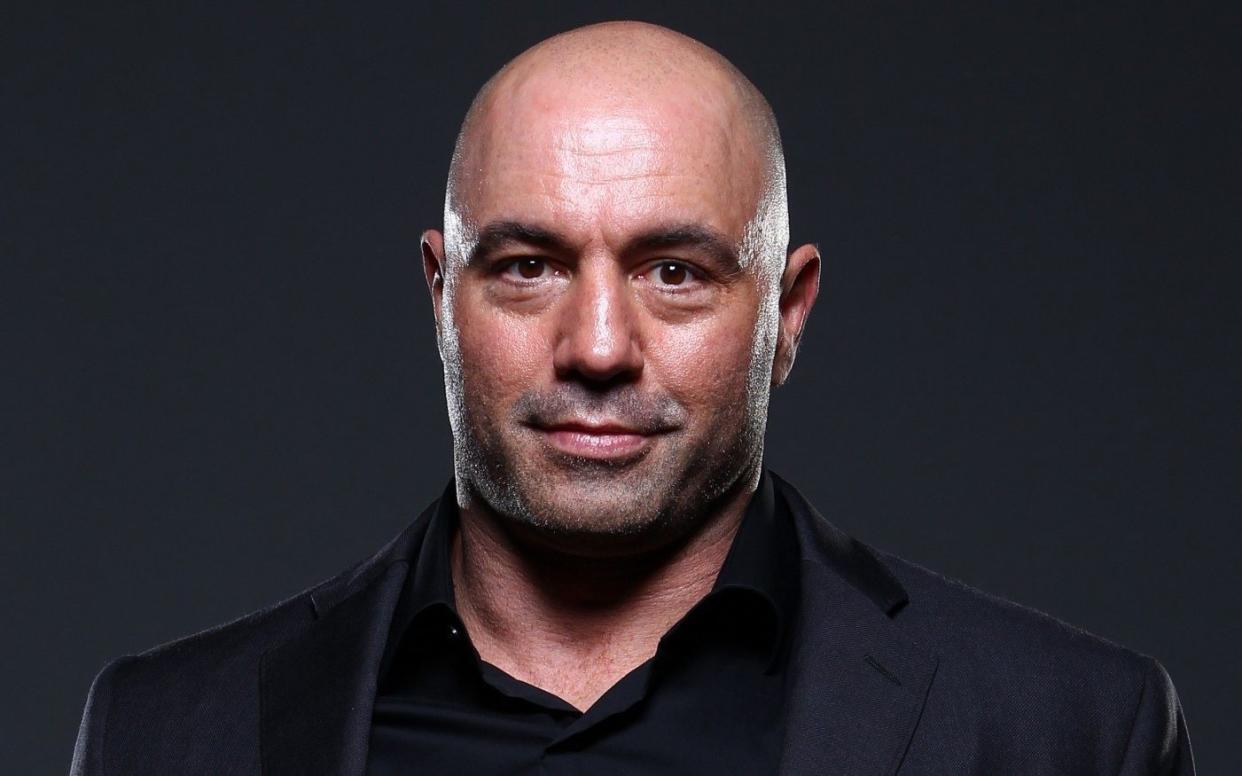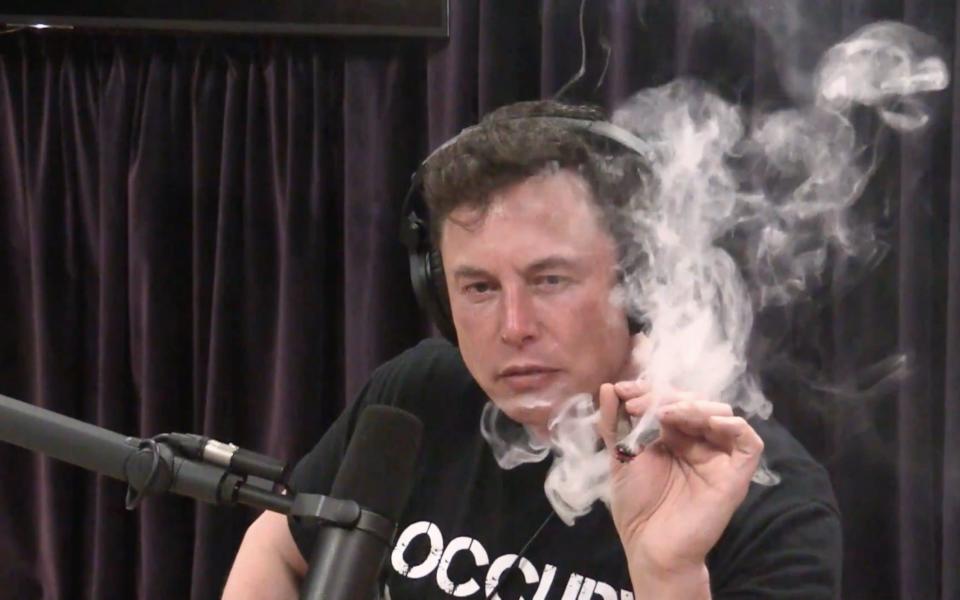How Joe Rogan became the world’s most popular podcaster

It was a clash of two cultural giants – one from the world of music, the other from the world of podcasts. The battleground, the fraught and disputatious question of vaccines.
On Monday, rock musician Neil Young posted a letter to his management team and record label, demanding that they remove his songs from the music-streaming service Spotify. This was in protest against the American podcaster Joe Rogan promoting what Young described as “fake information” about Covid vaccines, “potentially causing death to those who believe the disinformation being spread by them”.
Calling Spotify “the home of life-threatening Covid misinformation”, the singer said: “I want all my music off their platform. They can have Rogan or Young. Not both.”
Young, who is 76, is a multi-award-winning artist who, solo and with Crosby, Stills & Nash, epitomised the musical spirit of the Sixties and Seventies. Rogan, 54, is the most popular figure in the world of podcasts; the Joe Rogan Experience draws more than 11 million listeners per episode. Who would Spotify choose to back?
In 2020, the streaming service paid a reported $100 million (£75m) to licence Rogan’s show to the platform. By contrast, the deal the Duke and Duchess of Sussex signed with Spotify last year was worth a mere $30 million (£22m). If Young was intending his threat to leave the streaming service as a Mexican stand-off, it’s hardly surprising that Spotify bid Young a regretful farewell, adding they “hope to welcome him back soon” – a decision that shows who has the most cultural capital in America today.
Then, on Wednesday morning, as the news broke, “Who is Neil Young?” was trending on social media, with many users feigning surprise that the veteran rock star was still alive.

The Joe Rogan Experience is a curious affair, taking the form of long, discursive, often rambling conversations, in which the host sounds off about whatever seems to be crossing his mind – politics, religion, psychedelics, cage-fighting. He once described it as “escaping the net” and “swimming in open waters”. He is known for saying the unsayable – or at least that which is unsayable in more established broadcasting outlets.
What seems to have particularly excited Young’s ire is Rogan’s recent interviews with a doctor and a scientist, both prominent in the anti-vaxxing movement: cardiologist Dr Peter McCullough, who appeared on Rogan’s show in December, and Dr Robert Malone, who appeared earlier this month – both of whom have been accused of spreading misinformation about Covid treatment and the vaccine. In his appearance on Rogan’s show, Malone – an immunologist who has described himself as the “inventor” of mRNA and DNA vaccines on his LinkedIn profile – compared Covid-19 vaccination efforts in the United States with Germany in the Twenties and Thirties as the Nazi Party rose to power. Immediately prior to his appearance with Rogan, he had been banned from Twitter.
Rogan has frequently turned his attention to the pandemic, challenging conventional wisdom early on by raising the possibility that the pandemic originated with a leak from a Chinese laboratory.
Last August, he revealed that he had contracted Covid himself, which he had treated with ivermectin and monoclonal antibodies – laboratory-made proteins that mimic the immune system’s ability to fight off harmful pathogens such as viruses. (This week, the American Food and Drug Administration announced it was curbing the use of two out of three monoclonal antibody treatments available in the US, saying data shows they aren’t effective against the omicron variant.)
Two months later, in a three-hour interview with Dr Sanjay Gupta, CNN’s chief medical correspondent, Rogan admitted that he had almost been vaccinated some months previously but logistical issues had prevented him from taking the shot.
“You know what I think you should do?” said Rogan, who once described himself as a “f------ moron” on the subject, “I think you should get vaccinated and then get sick. This is why: because then you got the vaccine, which protects you from a bad infection, and then you get Covid, so then you get the robust immunity that’s imparted from having the actual disease itself.” He added: “Get vaccinated, let it wane and hang around with a bunch of dirty people.”

Whatever one may think of Rogan’s opinions, there is no doubting he’s a brilliant interviewer, asking the questions the listener would be asking themselves if they were in his seat. Shaven-headed, invariably dressed in a T-shirt showing off his muscular, heavily tattooed arms, he has the look of a man whose drink you would be careful not to accidentally spill. He is a former taekwondo instructor and US Open grand champion who is also practised in Thai kickboxing and Brazilian jiu-jitsu, as well as yoga.
He defies any political categorisation. He is usually described as a libertarian, but announced that he had not voted for Trump at the last election and spoke warmly of Bernie Sanders, who appeared on the podcast during the 2020 Democratic primary. He delights in attacking the pieties of social justice and what he calls “recreational outrage”, while apparently making an exception for his friend, the arch conspiracist Alex Jones, for whom outrage is his defining mode. Rogan has talked of having a “love-hate relationship with conspiracies” and has famously expressed doubts about whether the Moon landings actually took place.
In the echo-chamber of American politics, his influence far outweighs any other broadcaster or cable news host. With an estimated 11 million listeners per episode, he reaches nearly four times as many people as prime-time cable hosts such as Sean Hannity and Tucker Carlson of Fox News and Rachel Maddow of MSNBC. Carlson, the most popular broadcaster in cable news, averages around three million viewers a night.
Parts of Rogan’s show are also seen on his YouTube channel, which has 11.7 million subscribers. A single advertisement on a Rogan episode will cost upwards of $1 million.
The so-called “Rogan bump” – rather like the “Oprah effect” in publishing – has the capacity to significantly transform the lives of his guests, for better or worse. Obscure authors whom Rogan has mentioned on his show suddenly find their sales booming, comedians are suddenly playing to full houses. Famously, in 2018, the morning after Elon Musk was seen sharing a joint with Rogan on his show, the accounting officer and head of HR at Tesla, possibly coincidentally, announced they were leaving the company, while Tesla stock plunged nine per cent.

Rogan has found a particular constituency among disaffected young men – a constituency he shares with the psychologist Jordan Peterson, who has been a frequent guest on Rogan’s show. While Peterson is known for his stern, character-building advice to his young audience, Rogan has adopted a more laissez-faire approach. “Aspire to be the person you pretend to be,” he advised in one episode, “when you’re trying to get laid.”
Rogan’s father was a police officer who divorced his wife when Rogan was five – and whom Rogan has not seen since. He started his career as a stand-up comedian, appeared as an actor on several television shows, and worked as a commentator for the Ultimate Fighting Championship (UFC) – the mixed martial arts sport. In 2001, he began hosting a dare game show, Fear Factor, in which contestants would compete in extreme stunts and dares, such as walking on glass in bare feet and immersing their heads in a vat of animal parts.
Rogan would often encourage contestants by performing the challenges himself, entering into the spirit of the with uncommon exuberance. “It’s very rare that you’ll have a host that will fight with contestants,” Matt Kuntz, one of the show’s executive producers, told the New York Times. “Joe would fight with our contestants. We would have to literally run out of the control room and separate them.”
When, in 2009, Rogan launched his now-infamous podcast, its first sponsor was a company manufacturing sex toys. By 2015, it was drawing an audience of several million per episode.
In his outspokenness and his irreverence, he occupies something of the same space as stand-up Lenny Bruce did in the Fifties and Sixties, and Bill Hicks in the Eighties and Nineties: he is an equal opportunity offender, happy to upset everybody while being deeply loved by his audience. And he’s laughing all the way to the bank.


